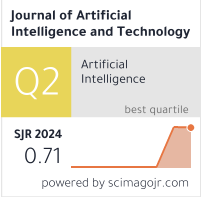Automatic Code Generation for Android Applications Based on Improved Pix2code
DOI:
https://doi.org/10.37965/jait.2024.0515Keywords:
automatic code generation, deep learning, long short-term memory network, Pix2code, residual networkAbstract
With the expansion of the Internet market, the traditional software development method has been difficult to meet the market demand due to the problems of long development cycle, tedious work, and difficult system maintenance. Therefore, to improve software development efficiency, this study uses residual networks and bidirectional long short-term memory (BLSTM) networks to improve the Pix2code model. The experiment results show that after improving the visual module of the Pix2code model using residual networks, the accuracy of the training set improves from 0.92 to 0.96, and the convergence time is shortened from 3 hours to 2 hours. After using a BLSTM network to improve the language module and decoding layer, the accuracy and convergence speed of the model have also been improved. The accuracy of the training set grew from 0.88 to 0.92, and the convergence time was shortened by 0.5 hours. However, models improved by BLSTM networks might exhibit overfitting, and thus this study uses Dropout and Xavier normal distribution to improve the memory network. The results validate that the training set accuracy of the optimized BLSTM network remains around 0.92, but the accuracy of the test set has improved to a maximum of 85%. Dropout and Xavier normal distributions can effectively improve the overfitting problem of BLSTM networks. Although they can also decrease the model’s stability, their gain is higher. The training and testing accuracy of the Pix2code improved by residual network and BLSTM network are 0.95 and 0.82, respectively, while the code generation accuracy of the original Pix2code is only 0.77. The above data indicate that the improved Pix2code model has improved the accuracy and stability of code automatic generation.
Published
How to Cite
Issue
Section
License
Copyright (c) 2024 Authors

This work is licensed under a Creative Commons Attribution 4.0 International License.





